

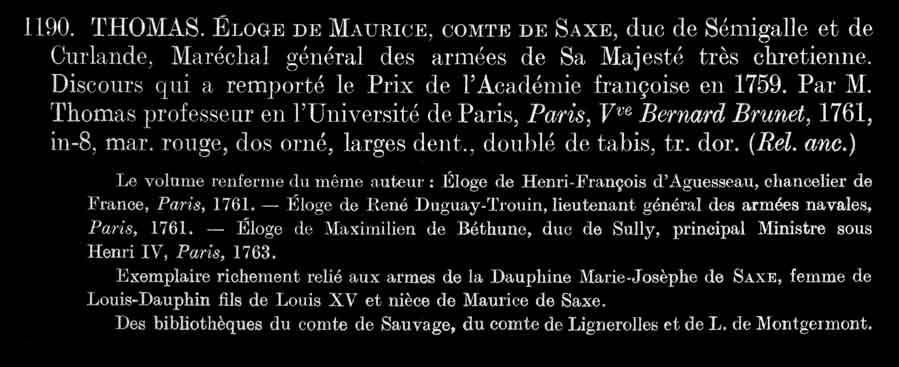
| The binding shown above is found in the fourth volume of a six volume auction catalogue entitled: La Bibliothèque de feu Èdouard Rahir, Paris, Francisque Lefrançois, 1936. This is item 1190 and I have also reproduced the description for it, found on page 53, that is the page just after the plate where we find this full sized facsimile reproduction. The quality of the image is stunning, you will never a find this level of reproduction quality in any modern publication. If you click on the digital reproduction above you will link to an amazing 300 dpi enlargement which is clear and sharp, however even at 600 dpi the detail is still very impressive. |
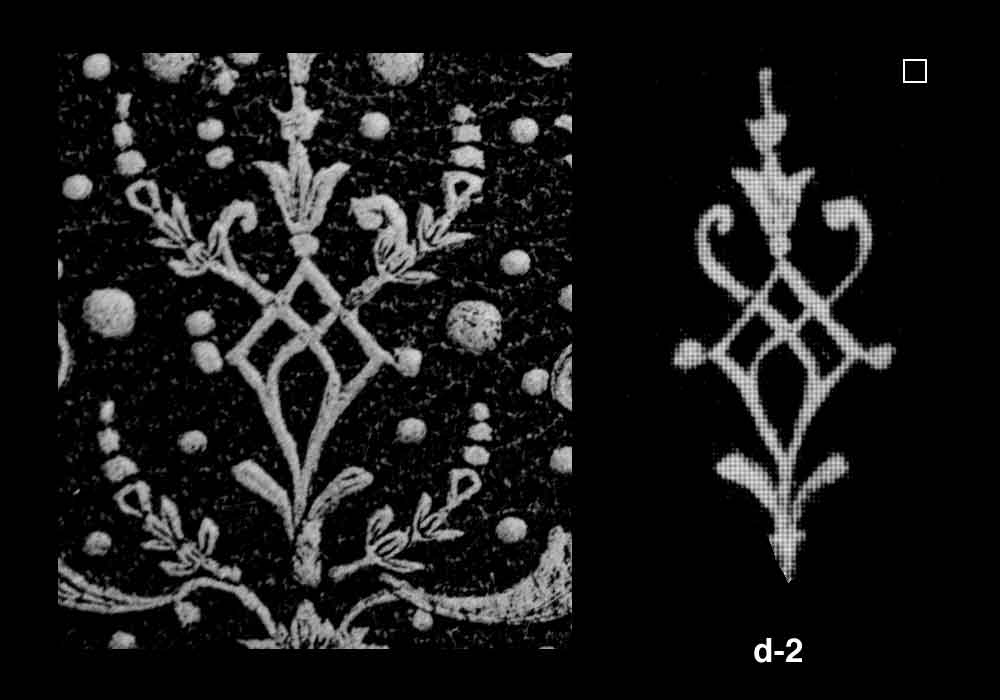
|
When I first spotted this binding as a possible Louis Douceur production, I hesitated as there seemed to be only one tool that matched any of the tool imprints collected so far. In Comparative Diagram 1, we can see that this is surely the same tool with its slightly asymmetric form. Shown here enlarged to 600 dpi, it is in fact much clearer than our imprint model. After searching high and low I finally stumbled on another binding with Douceur tools and also some of the tools that we see on item 1190. I found this second example (item 232, shown below) in a 1921 Bernard Quaritch publication: A catalogue of English and foreign bookbindings offered for sale by Bernard Quaritch. this can be found online with Kirtasbooks, and although the images available are low resolution we can still see that the tools look familiar. One day, hopefully I shall replace this internet image with a high resolution scan. |
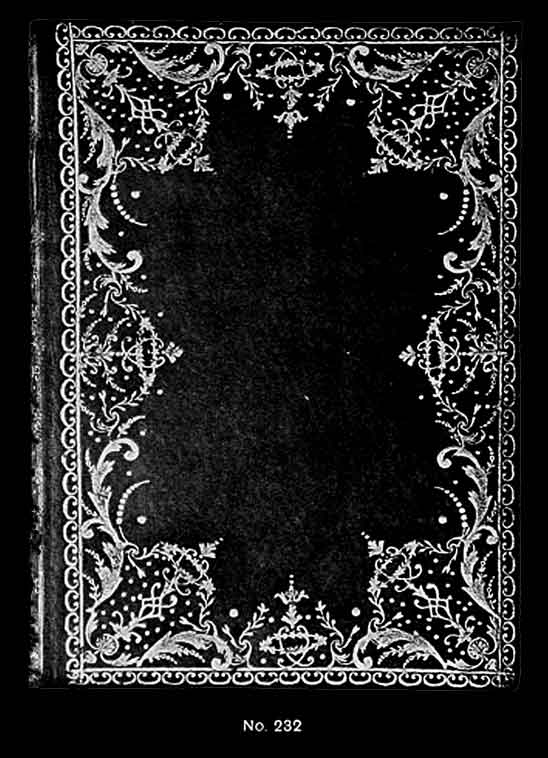

| In Comparative Diagram 2, I have assembled the Douceur imprints that we can see in the Quaritch binding 232, those shown in gold are the imprints that are shared with item 1190. There are at least two more interesting and important imprints found on 232 however the low resolution of the image does not allow us to add them to this collection for the moment. |
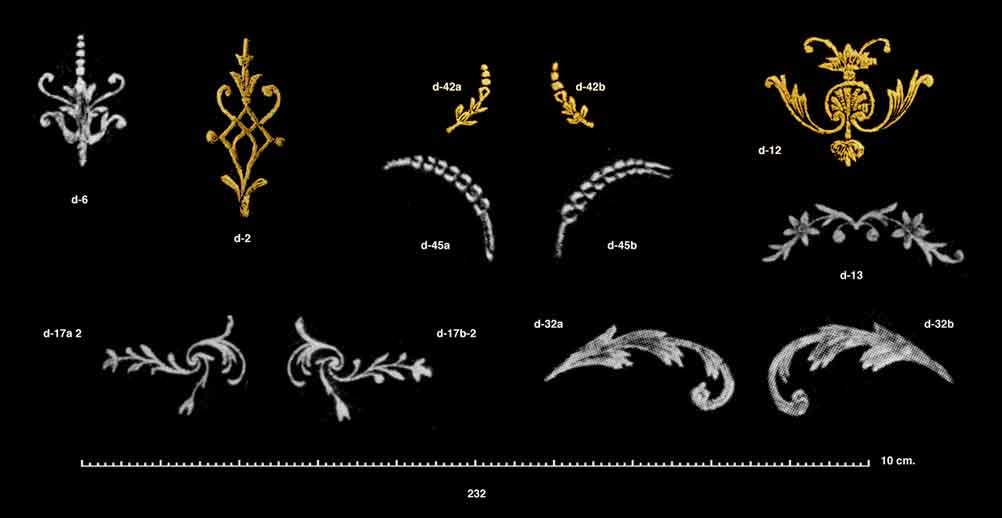
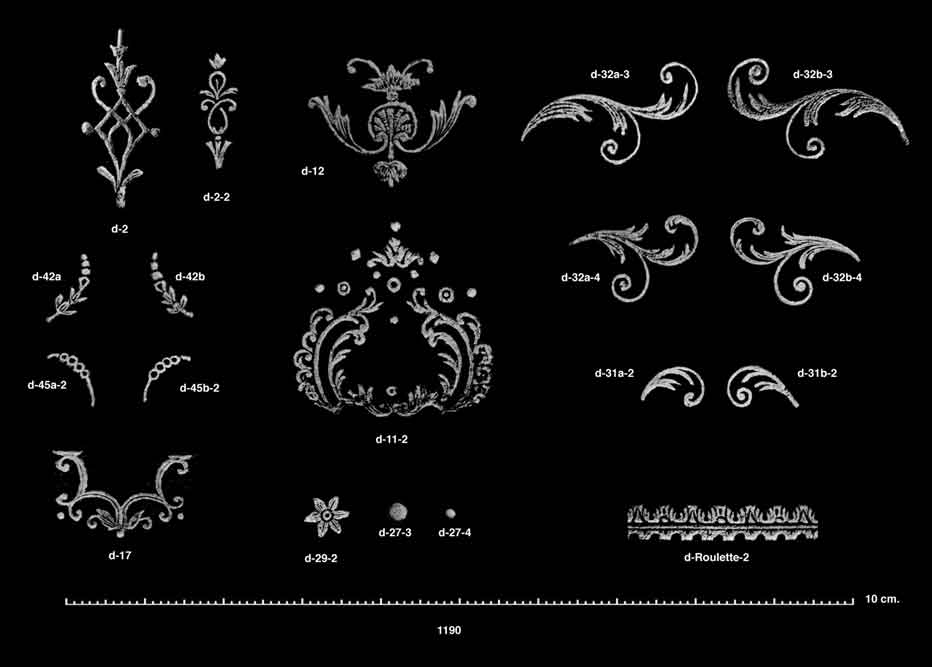
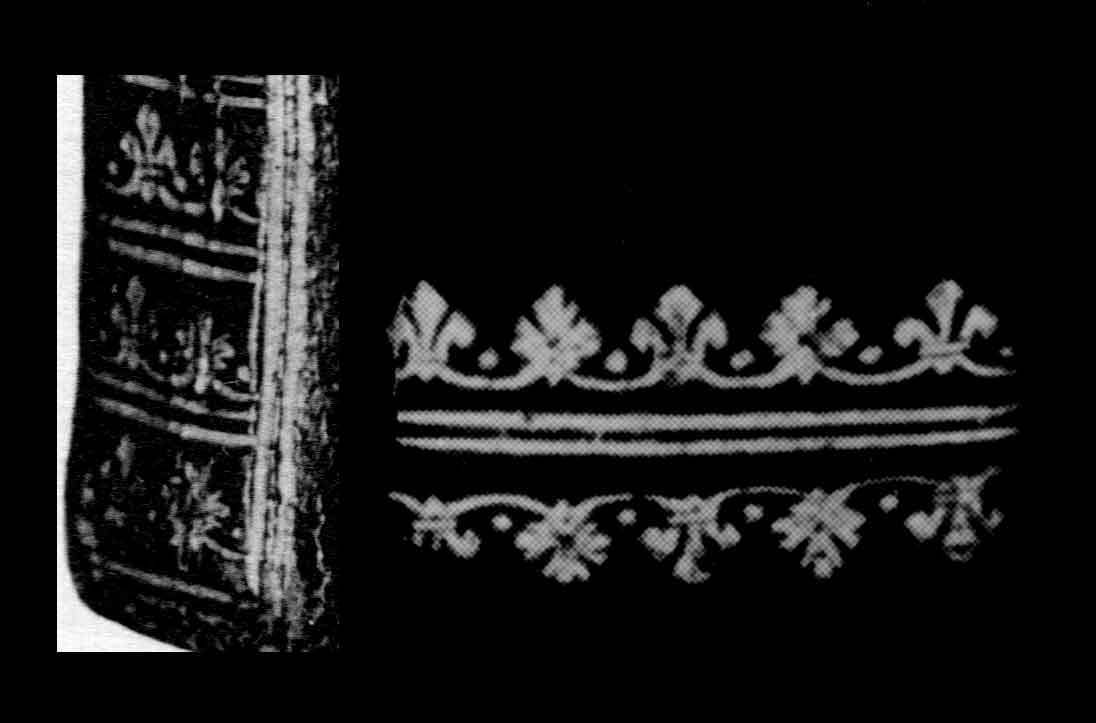
|
In Comparative Diagram 4, I have reproduced an enlargement of the small amount of the bottom spine that is fortunately just visible in this view of the binding. Due to the amazing quality of the reproduction we are able to see even this side view of the palette. I compare it here to a palette that is found on at least three other Douceur bindings. I think there is a good chance that this is the same palette. Within the description of item 1190 (also reproduced above) we can see that this binding contained a number of works, the last of which was published in 1763, thus the binding had to have been made sometime after, how much after is open to speculation, however even if it was bound in 1763, by this time Louis Douceur must have been nearly 60 or more years old. He had been working in the bookbinding business for more that 40 years, and one might question whether in fact he was still doing this work himself. On the next page we wil look at another example of a binding with only a few Douceur tools in evidence, but is perhaps from an earlier period, |
| information about the author | visit cyclopaedia.org |